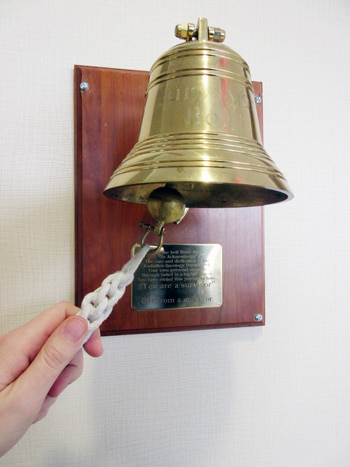Recent Posts
-
 Patient StoriesA lifesaver saved: An EMS veteran’s journey from rescue to recoveryNovember 14, 2025
Patient StoriesA lifesaver saved: An EMS veteran’s journey from rescue to recoveryNovember 14, 2025 -

-

Effective, energetic treatment for enlarged prostate

An enlarged prostate, also called benign prostatic hyperplasia, or BPH, is a common condition as men get older. By age 60, about 30% of men show moderate to severe symptoms of BPH; by age 80, it is 50%. An enlarged prostate gland can cause uncomfortable urinary symptoms, such as a weak urine stream, a stream that starts and stops, frequently getting up at night to urinate, or nocturia, and inability to empty the bladder.
There are multiple treatment options for BPH, ranging from behavior medications to medications and surgery. One minimally invasive options patients may be considering is bipolar enucleation of the prostate, or BipolEP.
If you are considering BipolEP treatment, here's what you need to know:
Prostate anatomy
The prostate is a small organ that sits beneath the bladder. The urethra, the tube that drains the bladder, runs through the middle of the prostate.
Early in a man's life, the prostate is roughly the size of a walnut or a small tangerine. Often, around age 50, the prostate increases in size. For some men, this change closes off the urethra and makes it more difficult for them to empty their bladder.
The prostate has two parts: the adenoma and capsule. The adenoma is the inner part that surrounds urethra. It's the part of the prostate that grows as men get older. The capsule is the outer part of the prostate and doesn't change in size over the course of life. A good analogy is to think of an orange. The peel represents the capsule, and the fruit represents the adenoma.
Removal of prostate tissue with enucleation
Using the orange analogy, enucleation aims to remove the fruit, or adenoma, from the inside while leaving the peel (the capsule) behind. This technique results in a wide-open channel for the urine to pass out of the bladder.
Ways to perform a prostate enucleation include:
- Through a large abdominal incision, or open simple prostatectomy
- Through several small abdominal incisions, or robotic-assisted simple prostatectomy
- Through the urethra without any incisions, or transurethral
History of transurethral enucleation
In 1983, Japanese surgeons performed the first transurethral enucleation. However, once they freed the adenoma from the prostate, they still had to make an incision to remove the tissue from the bladder. Imagine peeling an orange and leaving the segments floating in the bladder.
The procedure became more common after the invention of the morcellator in the late 1990s. This medical device is used to cut tissue into smaller pieces and allows the surgeon to remove prostate tissue through the urethra.
Transurethral enucleation of the prostate
Transurethral enucleation can be performed with different of energy sources:
- HoLEP
A commonly used energy source is the holmium laser. This is called a holmium laser enucleation of prostate, or HoLEP. - BipolEP
Another option is with bipolar energy, called BipolEP. It can be performed on any size prostate. This is the best procedure for patients who have larger prostates, usually over 80 milliliters, or who unable to void their bladders without a catheter. Also, patients who have been offered an open surgery because their prostate is too large may benefit from BipolEP.
Both procedures achieve the same result in removing the adenoma.
Procedure
BipolEP is performed in an operating room under either general or spinal anesthesia. During the procedure, a urologist inserts a specialized scope into the urethra. Using bipolar energy, the urologist enucleates all adenoma tissue, then cuts it into smaller pieces using the morcellator before easily removing it through the urethra. This procedure leaves the capsule intact and restores the urinary flow through the urethra. The length of the procedure depends on the prostate size but typically ranges from 45 minutes to two hours.
At the end of the operation, the patient receives a catheter and stays at the hospital overnight for bladder irrigation. For most patients, the catheter is removed the morning after surgery when their ability to urinate is tested.
Patient benefits
Because BipolEP doesn't require an incision, patients recover faster and have a lower risk of infections and bleeding. In most cases, the catheter can be removed the day after the operation. In contrast, open or robotic surgeries require patients to use a catheter use for several days.
Because a BipolEP procedure can be performed on any size prostate, it can help a wide range of patients. Finally, enucleation completely removes the adenoma, providing longer-lasting results compared to other surgical options.
Recovery
Patients need to limit strenuous physical activity for two weeks and drink plenty of fluids. Most people can resume normal activities after two weeks but may still see occasional bits of tissue or bleeding in their urine after heavy activity.
Most instances of urinary incontinence improve in the first three months after the procedure. Patients receive education on Kegel exercises, and physical therapy focuses on strengthening the pelvic floor.
Some urinary symptoms like urinary urgency, urinary frequency or nocturia may worsen for a few weeks after surgery as the bladder and prostate heal. These symptoms improve with time.
Other side effects are generally mild and comparable to other BPH treatments. The risk of bleeding and infection is low. However, patients with smaller prostates have a higher rate of scar tissue formation after this procedure.
Talk with your primary care provider and make an appointment if you're having trouble urinating and are looking for treatment strategies.
Next steps:
- Find a urologist near you.
- Read about treatment options for urinary leakage.
- Learn what's typical and what's not when it comes to urine color.
- Read how steam therapy is used to treat enlarged prostate.



